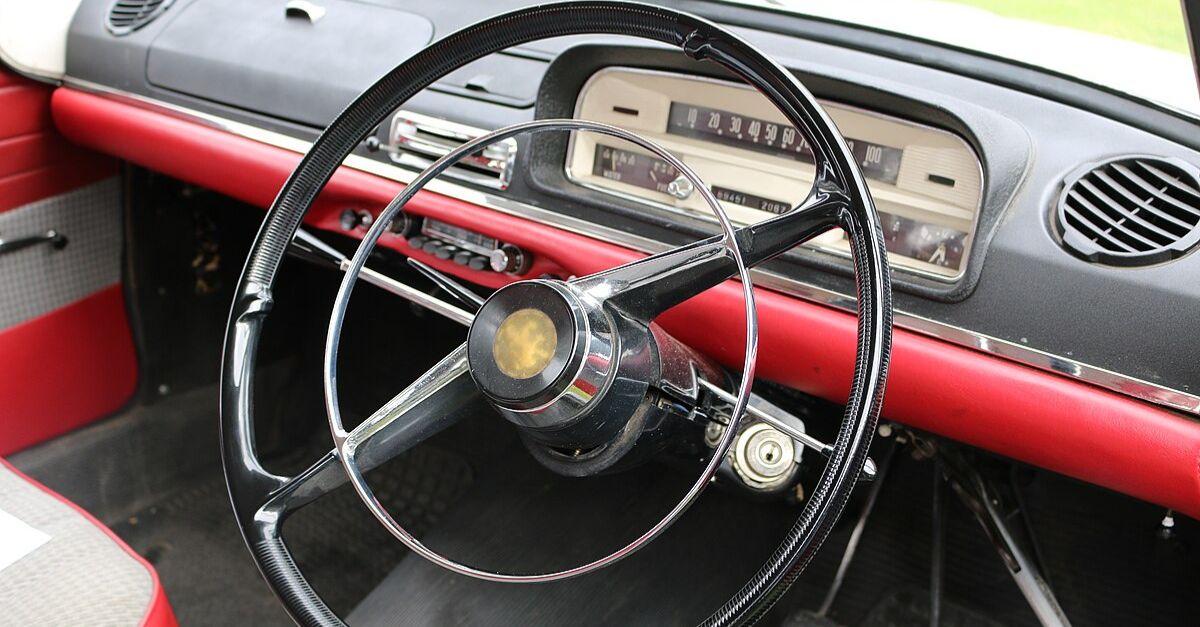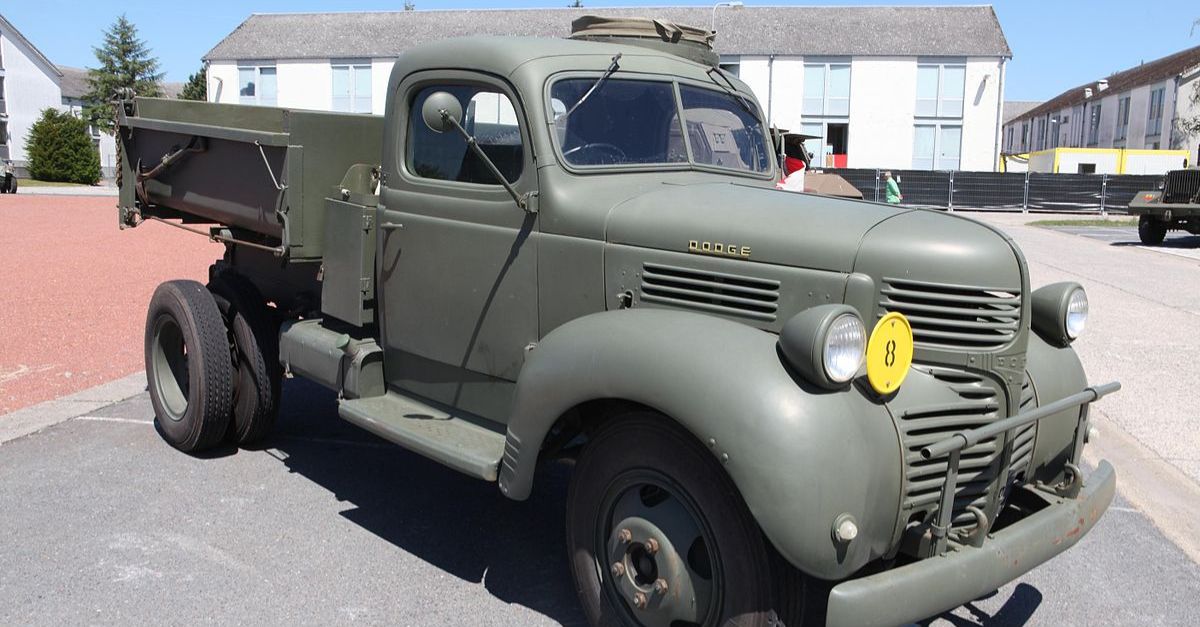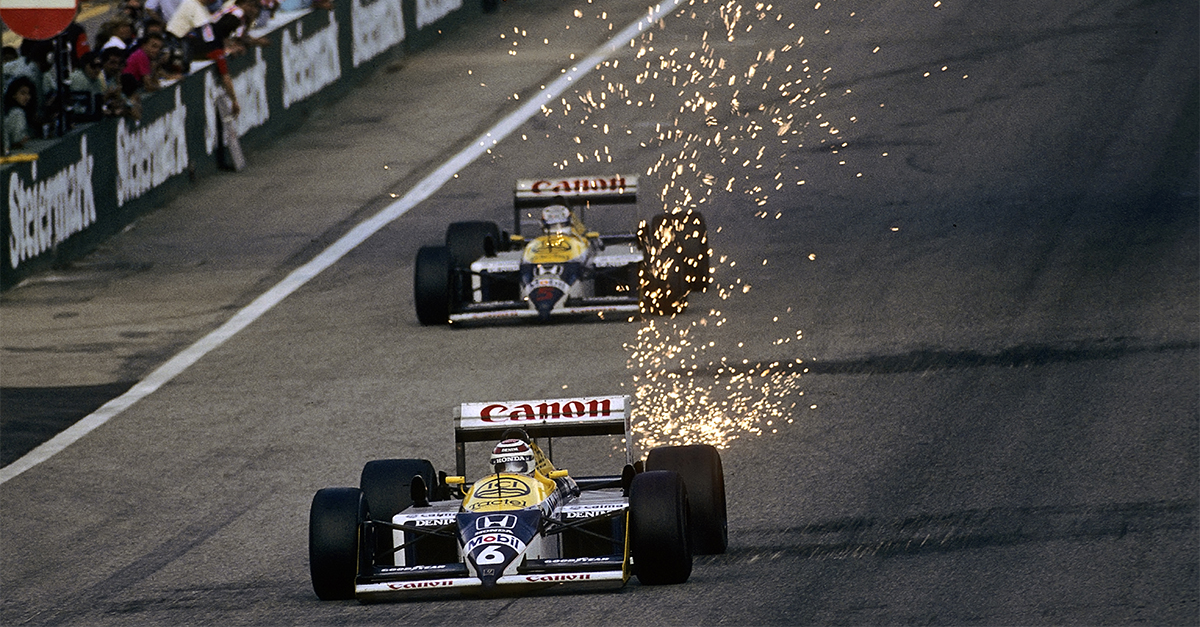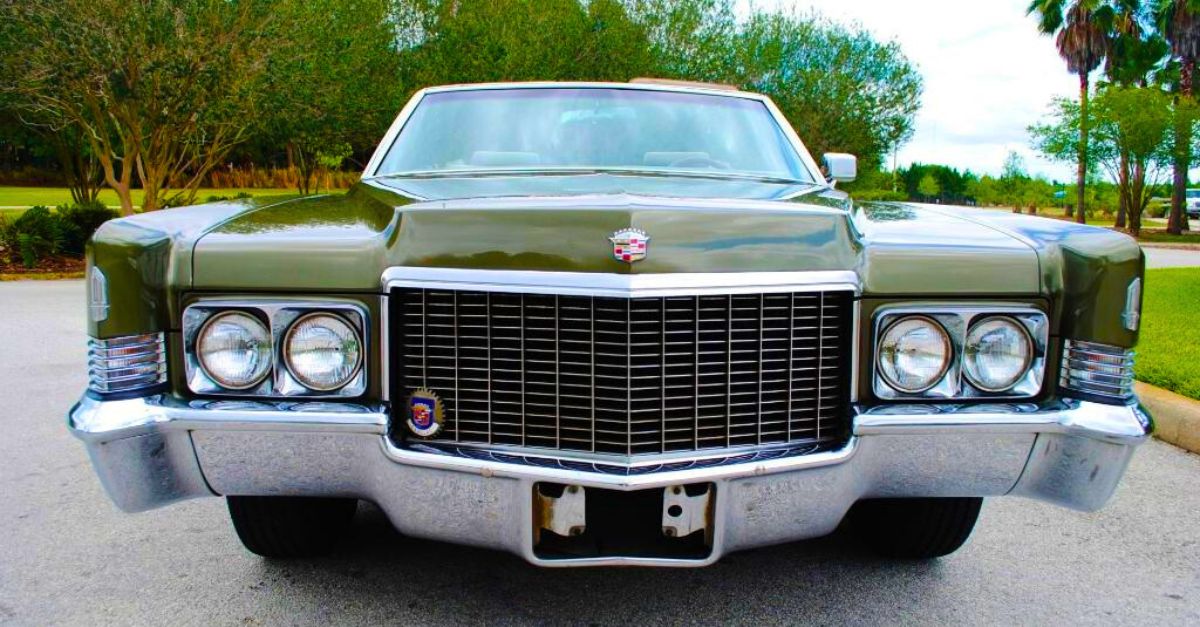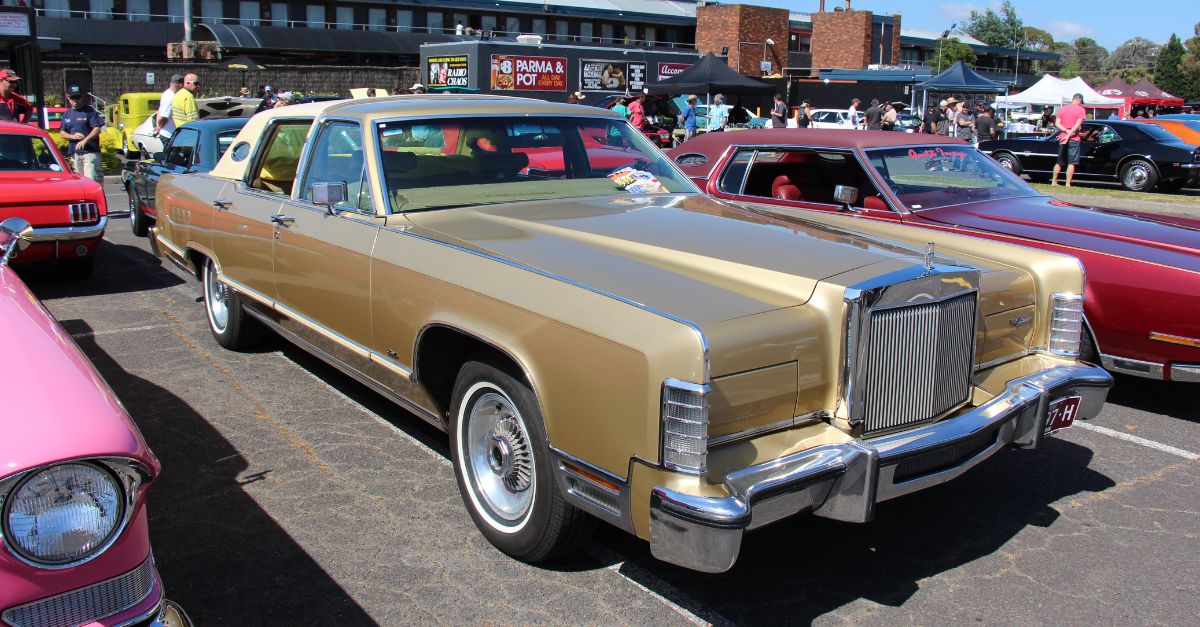More Than Just A Car
Hans Werner von Aufess rightly said, “A Mercedes is not just a car—it's somebody's dream.” Here are a couple of pre-2000 Mercedes models that highlight the brand’s unstoppable quest for engineering excellence in the 1900s.

Mercedes 35 HP (1901)
Emil Jellinek decided to name this car after his daughter Mercedes. The honeycomb radiator fixed the overheating problems that other cars had. The car ran at 35 horsepower, while most cars only had 10, and it totally smashed speed records at Nice Racing Week.
 Mercedes-Benz-Werkphoto, Wikimedia Commons
Mercedes-Benz-Werkphoto, Wikimedia Commons
SSK (1928)
Apparently, only 33 original SSKs were ever made, which makes them rarer than most modern supercars. It displayed a supercharged 7.1-liter inline-six engine producing 180 hp naturally aspirated and 300 hp with the supercharger engaged. The model was designed by Ferdinand Porsche.
 Jakub Flyz1 Maciejewski,CC BY-SA 3.0, Wikimedia Commons
Jakub Flyz1 Maciejewski,CC BY-SA 3.0, Wikimedia Commons
170V (1937)
During WWII, the 170Vs were tucked away in bomb shelters, and after the conflict, they played a key role in rebuilding Germany. These cars had a double-wishbone front suspension and a swing axle rear, which made them tough and reliable.
 Alexander Migl, CC BY-SA 4.0, Wikimedia Commons
Alexander Migl, CC BY-SA 4.0, Wikimedia Commons
170V (1937) (Cont.)
People could even run the engine on cooking oil when there was a shortage of fuel. This one was powered by a 1.7-liter four-cylinder engine and produced 38 hp. Around 91,048 units were produced between 1937 and 1955.
 Herranderssvensson, CC BY-SA 3.0, Wikimedia Commons
Herranderssvensson, CC BY-SA 3.0, Wikimedia Commons
220S Ponton (1956)
The Mercedes-Benz 220S Ponton came out in 1956 as part of the Ponton series. It had a 2.2-liter inline-six engine and stood handsome in different body styles like sedan, coupe, and cabriolet. What's cool is that it was the first Mercedes with full unitary construction.
 Herranderssvensson, CC BY-SA 3.0, Wikimedia Commons
Herranderssvensson, CC BY-SA 3.0, Wikimedia Commons
220S Ponton (1956) (Cont.)
Also, the 220S sedan offered more legroom and a longer passenger compartment, while the coupe and cabriolet provided a sportier look. It could reach a top speed of around 99 mph and had a 0-62 mph time of approximately 17 seconds.
600 Grosser (1963)
This stunner, also called the "Grosser Mercedes" or "Grand Mercedes," was made from 1963 to 1981. It had a fancy hydraulic system that controlled lots of things like the windows, seats, and even the trunk lid. Remember John Lennon? He got one in black with a refrigerated minibar.
 MrWalkr, CC BY-SA 4.0, Wikimedia Commons
MrWalkr, CC BY-SA 4.0, Wikimedia Commons
W111 280SE 3.5 Cabriolet (1969)
You might not believe but it took craftsmen two months to hand-finish each cabriolet body. Its aluminum V8 engine showed some similarities with the famous 'Weslake' racing engines. The car came with luxurious features such as air conditioning, power steering, and a Becker Europa radio.
C111 (1969)
Designed only to test out three-rotor Wankel engines, this experimental supercar reached 162 mph at Nardo. The gullwing doors and orange paint job done on this one became super famous. Mercedes even got offered tons of money from interested buyers, but they didn't want to sell even a single test unit.
 Detectandpreserve, CC BY-SA 3.0, Wikimedia Commons
Detectandpreserve, CC BY-SA 3.0, Wikimedia Commons
C111 (1969) (Cont.)
Both of the original C 111 models had simple gas-guzzler engines. Additionally, Mercedes-Benz stopped developing the Wankel engines in 1971 due to the very high pollutant content in their exhaust gas. And this was despite the engines' remarkable smooth operation and small size.
 JuergenG, CC BY-SA 3.0, Wikimedia Commons
JuergenG, CC BY-SA 3.0, Wikimedia Commons
450SEL 6.9 (1975)
Did you know that Claude Lelouch used this hydropneumatic beast to film "C'était un Rendez-vous" through Paris at dawn? How cool! The car’s self-leveling suspension could raise the car even with two wheels off the ground. That is ingenuity at its best.
 nakhon100, CC BY 2.0, Wikimedia Commons
nakhon100, CC BY 2.0, Wikimedia Commons
450SEL 6.9 (1975) (Cont.)
The world's first passenger car with a modern form of ABS had a huge 6.8-liter M100 V8 engine that produced around 249 horsepower. Additionally, the 450SEL 6.9 could reach a top speed of 225 km/h and possessed advanced lubrication features.
W123 (1976)
This one was the successor to the W114/W115 series and is known for its reliability, durability, and luxurious features. The 240D, 230E, and 300D were among the most popular models. Literally, over 2.7 million units were produced starting in 1976 with five body styles being available.
300TD Turbo Diesel (1979)
This is an example of the W123 series with a horsepower of 125. The 1979 300TD had 110 horsepower and 168 pound-feet of torque, with a power-to-weight ratio of 33 pounds per horse. It also had a sunroof, power windows, power-assisted steering, disc brakes, and a chrome luggage rack.
 Michael Gil, CC BY 2.0, Wikimedia Commons
Michael Gil, CC BY 2.0, Wikimedia Commons
190E 2.3-16 (1983)
Before the 190E 2.3-16 was shown to the public, three prototypes smashed world records at Nardo, zooming at full speed for eight days straight. Over eight days, from August 11 to August 21, 1983, these cars set an impressive three world records and nine international class records.
 Morio, CC BY-SA 3.0, Wikimedia Commons
Morio, CC BY-SA 3.0, Wikimedia Commons
W124 E-Class (1984)
This was considered the masterpiece of designer Bruno Sacco. The shape was made so sleek that it was said a mosquito could fly through the car without touching anything. This car used a multi-link rear suspension system, which was designed to improve handling and ride comfort.
500E (1991)
The 500E had a 5.0-liter M119 V8 engine that was handbuilt and produced 326 horsepower. It appears that during the assembly process, each of these vehicles made four trips back and forth between the Porsche and Mercedes facilities, with the body being somewhat enlarged.
500E (1991) (Cont.)
This added size was done to accommodate the huge brakes with hidden fender flares. During that time, around 10,479 units were produced in all. Also, it is said that the "Days of Thunder" star, Tom Cruise owned this beauty during the time it was gaining popularity.
 Mr.choppers, CC BY-SA 3.0, Wikimedia Commons
Mr.choppers, CC BY-SA 3.0, Wikimedia Commons
W140 S-Class (1991)
So, this was the first Mercedes with a V12 engine option and 408 hp. It had a retractable antenna and operated electrically. Depending on the engine, the W140 S-Class could achieve top speed of up to 250 km/h (155 mph) and rev from 0 to 100 km/h in just 6.6 seconds.
 Johannes Maximilian, CC BY-SA 4.0, Wikimedia Commons
Johannes Maximilian, CC BY-SA 4.0, Wikimedia Commons
C36 AMG (1993)
Here’s another first; the C36 was the first AMG model after Mercedes bought the tuning house. With a 3.6-liter inline-six producing 280 hp at 5,750 rpm it had a top speed of 250 km/h (limited). It also had special AMG gauges and a two-color AMG steering wheel.
 nakhon100, CC BY 2.0, Wikimedia Commons
nakhon100, CC BY 2.0, Wikimedia Commons
500SL (1989)
Unlike the Mercedes-Benz 300SL model from the 1950s, which had gullwing doors, the 500SL had a traditional convertible top. It was also equipped with a 5.0-liter V8 engine (M119), producing 322 horsepower at 5,500 rpm and 450 Nm of torque at 4,000 revolutions per minute.
E60 AMG (1995)
The Mercedes-Benz E60 AMG, introduced in 1994-1995, was a high-performance variant of the W124 E-Class. It had a top pace of 250 km/h (155 mph) and could accelerate from 0 to 100 km/h (0-62 mph) in about 5.5 seconds. AMG-specific body kits were also present within.
 Carbonmotors, CC BY-SA 4.0, Wikimedia Commons
Carbonmotors, CC BY-SA 4.0, Wikimedia Commons
CLK GTR (1997)
You wouldn’t believe it, but the road car version cost more than three Ferrari F50s combined. It had an inbuilt carbon fiber monocoque chassis. However, the company had only 26 road cars built. Note that these were produced to meet the homologation requirements for the FIA GT Championship.
 Alexander Migl, CC BY-SA 4.0, Wikimedia Commons
Alexander Migl, CC BY-SA 4.0, Wikimedia Commons
190E Evo II (1990)
The Mercedes-Benz 190E 2.5-16 Evolution II, often referred to as the Evo II, is a legendary high-performance version of the 190E series. It had an adjustable suspension with a 25mm lower ride height. And about the racing versions, they could reach 185 mph on the Mulsanne Straight.
 Mic, CC BY 2.0, Wikimedia Commons
Mic, CC BY 2.0, Wikimedia Commons
300CE-24 (1988)
Here’s another marvel of precision engineering and craftsmanship. Weighing about 1,510 kg, it reinforced a pillarless body structure while showing off a four-speed automatic transmission. Also, prices for a well-maintained 300CE-24 can range anything from $15,000 to $30,000.
 Jeremy, CC BY 2.0, Wikimedia Commons
Jeremy, CC BY 2.0, Wikimedia Commons
SL73 AMG (1995)
Its 7.3-liter V12 engine was a powerhouse, and the fact that only about 40-50 units were made makes it even more special. It's amazing to think that this engine later found its way into the Pagani Zonda, which is another legendary supercar.
SL73 AMG (1995) (Cont.)
Some sources mention how this car could reach a speed of 322 km/h (200 mph). From 1999 to 2001, a second set of SL73 AMG roadsters were produced. But, comparing it to the McLaren F1, which had a production run of 106 units, the SL73 AMG is indeed rarer.
 nakhon100, CC BY 2.0, Wikimedia Commons
nakhon100, CC BY 2.0, Wikimedia Commons
CLK320 (1997)
A blend of performance and luxury? It’s none other than the Mercedes-Benz CLK320 from 1997. This beast had a 3.2-liter V6 engine producing 215 horsepower (160 kW) and 310 Nm of torque (229 lb-ft). It could move from 0 to 60 mph in about 8.4 seconds.
 Rudolf Stricker, CC BY-SA 3.0, Wikimedia Commons
Rudolf Stricker, CC BY-SA 3.0, Wikimedia Commons
560SEC (1985)
The car's sleek design is what made it aerodynamic, with a drag coefficient of 0.34 achieved after 1,200 hours of wind tunnel testing. Under the hood, it packed a 5.6-liter V8 M117 engine that cranked out 300 horsepower, propelling it to a maximum speed of 250 km/h.
 Spanish Coches, CC BY 2.0, Wikimedia Commons
Spanish Coches, CC BY 2.0, Wikimedia Commons
560SEC (1985) (Cont.)
A special pearl-effect paint job was applied to the Japanese market. What’s more, it was the first vehicle with acceleration skid control, and bulletproof glass was one of the special order choices. Can you imagine? Each automobile took two and a half months to create.
500E Estate (1992)
Here is one cool station wagon! It had a handbuilt 5.0-liter M119 V8 engine that pumped out 326 horsepower. The rear suspension was also modified to handle extra weight without sacrificing performance. Only eight of these were made, though, with a curb weight of approximately 1,770 kg.
 Mr.choppers, CC BY-SA 3.0, Wikimedia Commons
Mr.choppers, CC BY-SA 3.0, Wikimedia Commons
300SL Roadster (1957)
Say hello to an engineering masterpiece with a fuel-injected 3.0-liter straight-six engine. This car’s rear suspension got an upgrade, which improved the handling compared to the Gullwing. In case you didn’t know, Clark Gable ordered the first U.S. delivery example in silver.
 Pat Durkin, CC BY-SA 2.0, Wikimedia Commons
Pat Durkin, CC BY-SA 2.0, Wikimedia Commons
300SEL Racing W109 (1971)
Nicknamed "Red Pig," this piece achieved second place overall at 24 Hours of Spa. As a racing sedan, it features custom aluminum body panels that reduce its weight to around 1,635 kg. The company also had to modify the trunk to fit the massive 400-liter fuel tank.
 Johannes Maximilian, CC BY-SA 4.0, Wikimedia Commons
Johannes Maximilian, CC BY-SA 4.0, Wikimedia Commons
190E 2.5-16 Evolution I (1989)
With 195 horsepower, this automobile was made for racing. It incorporated three height-adjustable suspension settings that were controlled electronically. Also note that it was created to compete in the German Touring Car Championship (DTM) against the BMW M3, with all 502 cars produced in left-hand drive.
 Damian B Oh, CC BY-SA 4.0, Wikimedia Commons
Damian B Oh, CC BY-SA 4.0, Wikimedia Commons
300TE 4MATIC (1987)
The 300TE 4MATIC was Mercedes-Benz's first AWD wagon, which made it great for handling and stability. The 4MATIC system used a couple of sensors and a hydraulic multi-plate clutch for better traction. Additionally, it had automatic ride height adjustment to keep the ground clearance consistent.
 davocano, CC BY 2.0, Wikimedia Commons
davocano, CC BY 2.0, Wikimedia Commons
500SLC (1980)
This one was a bit heavy at 1,600kg, but it still managed to win several rally championships. The 500SLC as a grand tourer could go from 0 to mph in 7.5 seconds and had a top speed of 140 mph. It also owned a M117 V8 engine that pumped out around 240 horsepower.
200D (1986)
You can’t miss out on this taxi model with a bulletproof 2.0-liter diesel engine. There are documented cases of it going over one million kilometers without needing any major repairs. However, it had an innovative multi-link rear suspension design and was the first production car to feature plastic wheel covers.
 free photos & art, CC BY 2.0, Wikimedia Commons
free photos & art, CC BY 2.0, Wikimedia Commons
600 Pullman Landaulet (1965)
A luxurious limousine with a convertible rear roof? Here you go. This one came with a 6.3-liter V8 engine that could effortlessly move its 3,340kg weight. The front and rear compartments had separate air conditioning, and the hydraulic system controlled 150 different functions.
 Edvvc, CC BY 2.0, Wikimedia Commons
Edvvc, CC BY 2.0, Wikimedia Commons
C230 Kompressor W202 (1995)
Here comes the first modern Mercedes to bring back the Kompressor name. In comparison to the normally aspirated C280, it was more fuel-efficient and occupied the gap between the standard C-Class and AMG vehicles. It had a compressor (supercharger) of the helical kind.
 Rudolf Stricker, CC BY-SA 3.0, Wikimedia Commons
Rudolf Stricker, CC BY-SA 3.0, Wikimedia Commons
400E (W124, 1992)
Only 10,479 of the 400E cars were made, so it's pretty rare and a sought-after model for collectors. To run extremely fast, it included a special transmission cooling system. One cool thing is that Porsche was in charge of tuning and assembling the engine, which added to its performance cred.
E36 AMG Estate S124 (1994)
The limited edition wagon owned a handbuilt 3.6-liter straight-six engine. This Mercedes ride came with a special rear self-leveling suspension. But they only made fewer than 170 of these babies, and they immediately became a hit with high-speed European delivery services.
 Niels de Wit, CC BY 2.0, Wikimedia Commons
Niels de Wit, CC BY 2.0, Wikimedia Commons
E36 AMG Estate S124 (1994) (Cont.)
This automotive machine produced 272 horsepower and 380 Nm of torque. Additionally, the E36 AMG Estate featured AMG-specific body kits, including aero body kits, larger alloy wheels, and distinctive AMG badging. Its interior was also upgraded with sportier seats.
 What Is An E36 AMG? (4K HDR) by AMGmeister
What Is An E36 AMG? (4K HDR) by AMGmeister
300CE-24 AMG Hammer (1988)
How about a super cool AMG makeover? The 300CE-24 AMG Hammer was made with a custom transmission that could handle a lot of torque. The suspension got a makeover, too, with some fancy Bilstein shocks. It established AMG's reputation globally.
 The Hammer: 1988 Mercedes-Benz 300CE 6.0 AMG review | Wheels Australia by Wheels Australia
The Hammer: 1988 Mercedes-Benz 300CE 6.0 AMG review | Wheels Australia by Wheels Australia
300CE-24 AMG Hammer (1988) (Cont.)
Each makeover cost more than a brand new Porsche 911. And it's fast, reaching a top speed of 300 km/h. Besides that, it was often called "The Executive Supercar" with current values exceeding $400,000 for good examples. The original price, however, was higher than the Porsche 959.
 Mercedes 300 E 6.0 V8 AMG „The Hammer“ REVIEW W124 (1988) - Autogefühl by Autogefühl
Mercedes 300 E 6.0 V8 AMG „The Hammer“ REVIEW W124 (1988) - Autogefühl by Autogefühl













